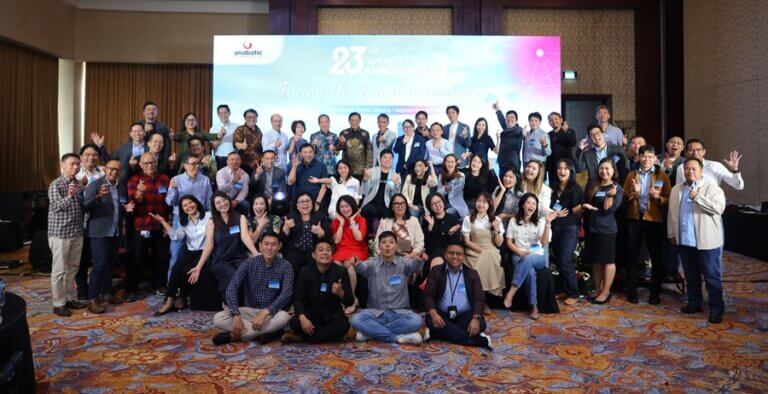The advent of the internet has introduced massive flows of communication and information to countless individuals. However, the use of this technology has not been accompanied by adequate awareness of cybersecurity. This aspect is often overlooked in the use of digital devices.
According to IBM’s Cost of a Data Breach Report 2024, the global average financial loss from data breaches reached US$ 4.88 million, reflecting a 10% increase compared to the previous year
Most of these attacks stem from human error—such as using easy-to-guess passwords or clicking on deceptive links—which can open critical security vulnerabilities. Therefore, it is essential for both individuals and organizations to understand and maintain basic awareness of cybersecurity.
Understanding Cybersecurity
Cybersecurity refers to efforts to protect digital systems, networks, and data from potential threats or unauthorized access in cyberspace. Protection isn’t limited to tools like antivirus software or firewalls, it also includes operational procedures and long‑term strategies for managing digital risk.
Human negligence remains a major challenge in cybersecurity. Therefore, user behavior plays a critical role in cultivating a safe digital environment. This aligns with the foundational principles of the CIA Triad, confidentiality, integrity, and availability, which serve as the cornerstone in protecting data and systems comprehensively.
Threats in Cyberspace
The cyber realm is rife with threats in various forms. Cyberattacks now target individuals, organizations, and vital infrastructure. Users must understand the types of threats from the outset to respond appropriately and tailor effective mitigation steps.
1. Phishing
Phishing is a cyberattack that steals personal and sensitive information by exploiting user trust, often via fake emails or messages masquerading as trusted entities such as banks or digital services. When a user clicks on a link or replies, they may unknowingly reveal sensitive data.
2. Malware
Malware or malicious software is designed to infiltrate and damage systems without user consent. It spreads through email attachments, fake links, or untrusted downloads. Malware types include viruses that corrupt files, Trojans masking as legitimate applications, spyware that monitors activity, and ransomware that encrypts data for ransom. Often installed accidentally, malware aims to steal personal or critical business data.
3. Distributed Denial of Service (DDoS)
This type of attack overwhelms servers with excessive requests to render websites, applications, or online services inaccessible. Resulting in slowdowns, errors, or total failure, DDoS is typically orchestrated via multiple compromised devices and sometimes used as a distraction for subsequent attacks.
4. Man‑in‑the‑Middle
This occurs when an attacker intercepts communication between two parties, such as a user and a website, often on public Wi-Fi. The attacker can monitor, steal, or manipulate data without either party realizing during the transmission.
Preventive Measures Against Cyber Threats
Different cybersecurity protections focus on different assets, requiring distinct approaches. Organizations must carefully select service partners who not only offer solutions, but also provide value-added services to address operational challenges effectively.
Answering this need, Mega Buana Teknologi (MBT), a member of CTI Group and subholding of PT Anabatic Technologies Tbk, emerges as a strategic partner in building cyber resilience through adaptive, end‑to‑end security solutions tailored to business needs.
Anabatic is a leading public IT company in Indonesia offering cutting‑edge solutions for the digital era, empowering businesses to grow and remain competitive. You can prevent cyber threats with proactive, comprehensive security solutions designed to ensure smooth operations and business continuity.
Furthermore, the solution includes encryption key separation from the database server to secure the encryption and decryption process, as well as database object isolation to restrict access only to authorized accounts.
Enhancing Cybersecurity Amid Digital Threats
With myriad cyber threats that can occur at any moment, awareness and readiness are imperative. Cybersecurity is no longer just a technical matter; it is a vital strategy to protect trust and ensure operational continuity in an increasingly connected era.
Targeted preventive efforts not only keep data traffic safe and organized but also strengthen overall digital resilience. This way, individuals and businesses can face digital challenges with greater confidence and ensure their systems remain protected from costly risks.
By adopting intelligent technology and data-driven approaches, you can create a defense system that is adaptive, efficient, and sustainable in addressing various cyber threats. To support this, below are several reliable security solutions designed to comprehensively protect digital assets:
Unified Intelligent Platform
This integrated security system, based on intelligent technology, is designed to protect all digital assets, ranging from cloud, endpoints, networks, applications, to users. The platform enables automated threat detection with accurate threat visualization.
Network Detection and Response (NDR)
A security system that monitors network traffic in-depth to detect cyber threats in real time. NDR connects data from networks, servers, endpoints, and users, allowing organizations to understand and respond to threats more quickly and accurately.
Data Security
An effort to protect a company’s critical data from leaks, theft, or misuse. Data is automatically encrypted before being stored and can only be accessed securely when needed.
Additionally, sensitive data can be automatically masked without requiring changes to existing applications, thus preventing unauthorized access. This solution is also equipped with anti-ransomware protection to keep data safe from malware threats.
Data Access Monitoring and Management
Access control and monitoring of user interactions with data are essential aspects of modern security. This data access monitoring solution provides granular control, detailed audit trails, and comprehensive permission management through a single integrated platform.
The system offers full visibility into database access activities, including SQL statements and file storage monitoring, to prevent potential damage from untrusted files. In addition, this solution supports end-to-end monitoring integration across all components of the company’s IT architecture.
Secure Administrative Database Control
This approach is a critical step in maintaining the confidentiality, integrity, and availability of data. It includes the implementation of role-based access control (RBAC) to ensure that only authorized users can access the data.
Read More:
- IT Consulting Services for Business Success in the Technology Era
- Maximizing Business Performance Through Managed IT Service Provider
- Cloud Service Provider for Businesses in Indonesia
- Cloud Computing Infrastructure Helps Optimize Business Performance
- Basic Understanding of Stock Buying and Selling for Beginners
























